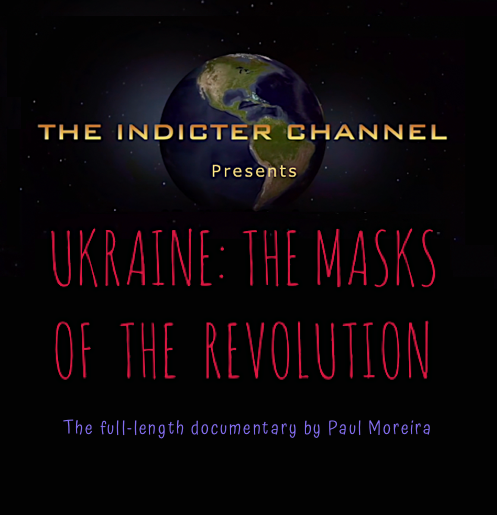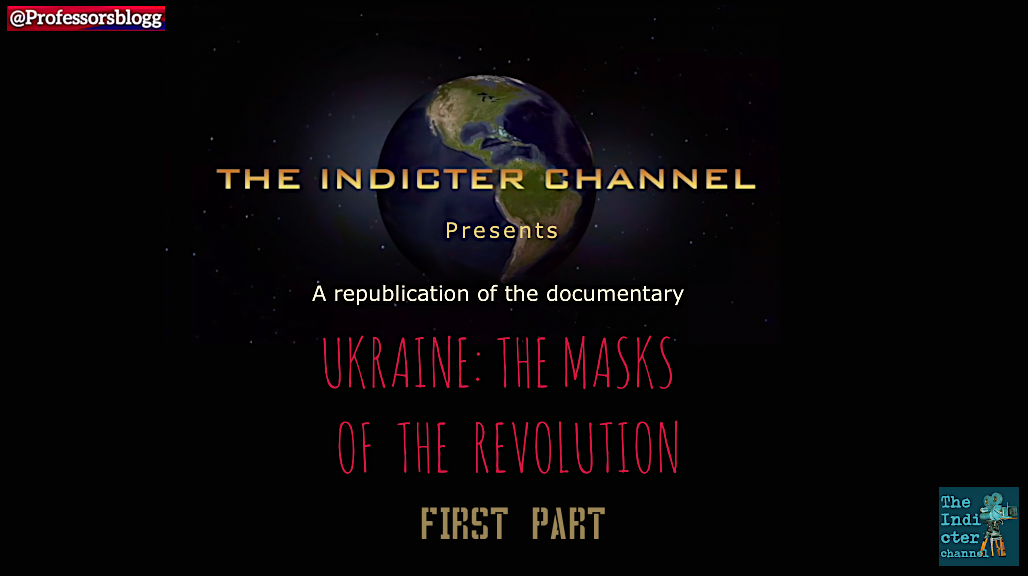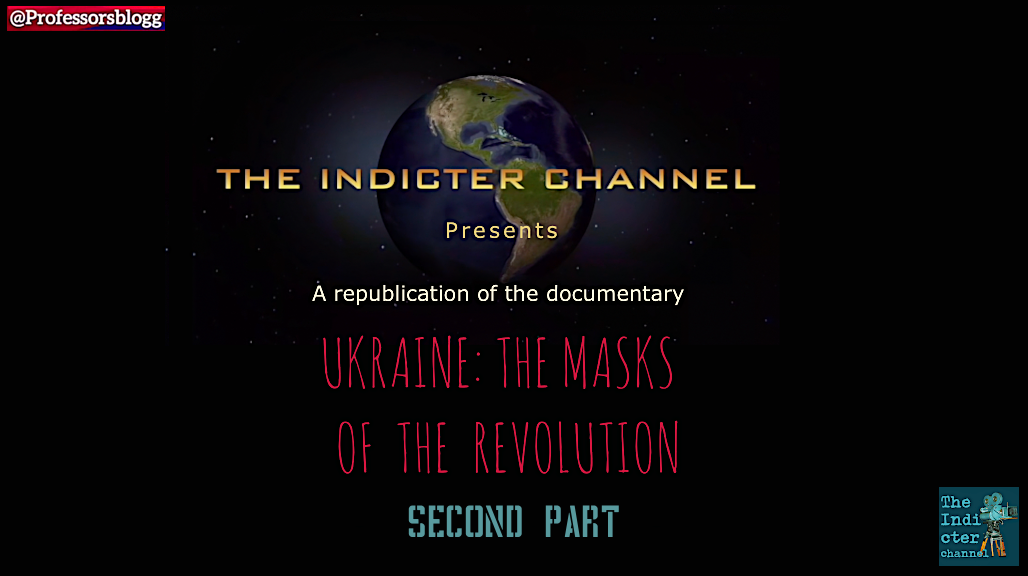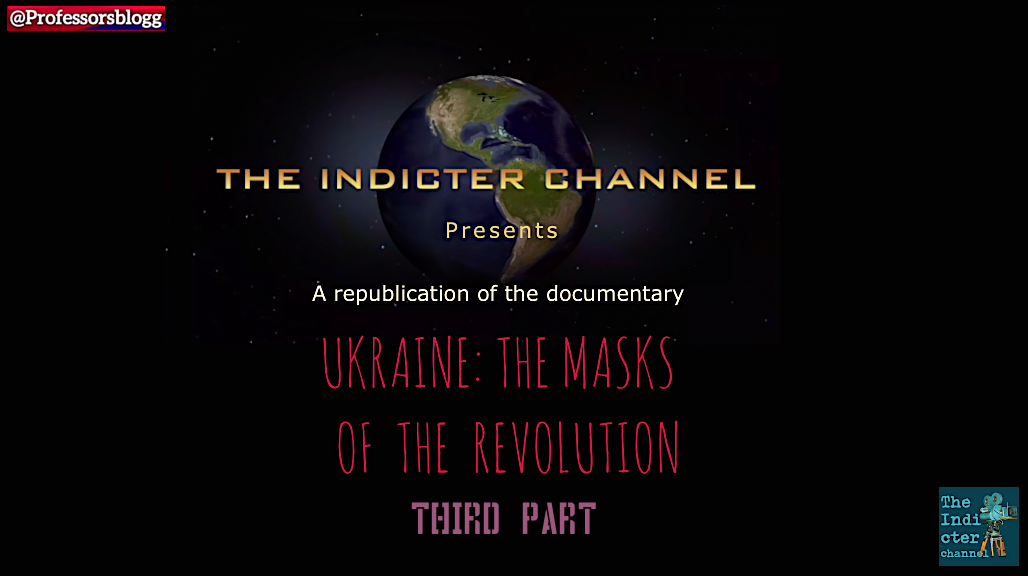By Prof Marcello Ferrada de Noli, chief-editor
The Indicter here republish the documentary by Paul Moreira, “Les Masques de la Révolution – (The Masks of the Revolution”), which describes dramatic situations around the Maidan revolt, the participation of Nazi formations, the 2014 coup orchestrated by the US Department of State –in particular Victoria Nuland’s prominent role– and the ensuing massacre in Odessa.
The film was first aired in French television on February 16, 2016. However, after pressures from Ukrainian officials and pro Ukraine bloggers, added critical articles in for example Le Monde and The Guardian, the documentary was taken down in France and banned in Europe.
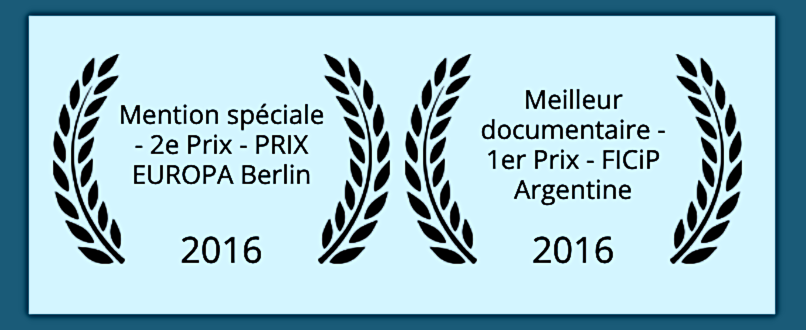
In addition, according to kanekoa.substack.com on Twitter [@KanekoaTheGreat], “The Ukrainian government demanded this Euromaidan documentary be taken off the air in Europe”. Also confirmed in this media, who writes: “The Ukrainian embassy called on Canal+, a well-known pay-to-view TV channel, not to broadcast it”.
All copies of the Paul Moreira’s documentary that appeared listed in our Google search (English titles) turn out not been any longer available in YouTube. Finally we found this version in French. The version we republish here was made by Vox Populi Evo, and we found it published by Odysee. The English translation credited to @Linda_PSD.
As these materials have been banned in Europe at Ukraine’s request, one doctor colleague from the SWEDHR ranks warned me of the consequences this republication in The Indicter would have for SWEDHR. I replied that, firstly, I have already published a disclaimer stating that no single doctor or professor colleague at SWEDHR should be held liable for publications signed by me about the Ukraine war. I take myself the entirely responsibility. Secondly, I am already listed in the Ukraine’s infamous Myrotvorets site.
A resume with the criticism to this documentary, and the response by cineast Paul Moreira, follows below in this page.
FIRST PART
SECOND PART
THIRD PART
Criticism
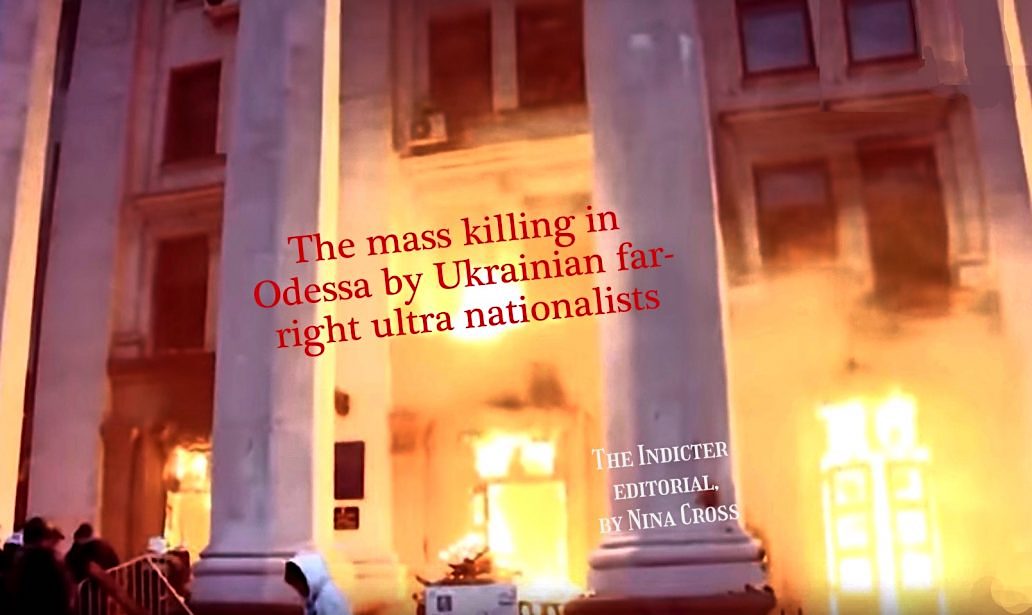
Expectedly, the revelations in this documentary raised fierce objections from the part of those in one way or another implicated in the cover-up of the atrocities referred. According to Paul Moreira in “«Ukraine : les masques de la révolution»: réponse aux critiques”, the attacks to the documentary instead aimed to make the public deviate their attention from a most disquieting fact: the Ukrainian authorities never took to court the Nazi militants that did set fire the Odessa Union building with Molotov bombs –killing 45 peoples (workers, some of them with spouse and children). See Nina Cross piece in The Indicter, “The mass killing in Odessa by Ukrainian far right ultra nationalists“.
The reason for such neglection would be, according to Moreira, that the victims were Russian-ethnic Odessans. We have to bear in mind that Yatsenyuk at that time had referred to Russian-ethnic as “subhuman”.
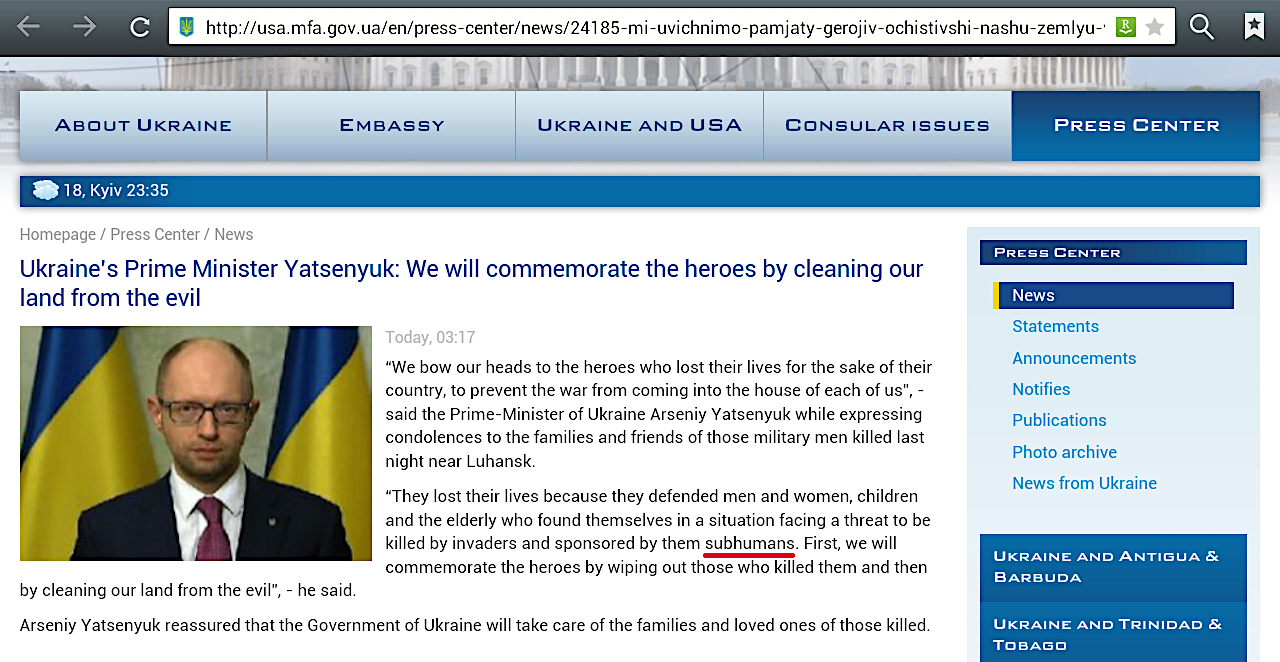
Paul Moreira responded to the criticism, taken up its main arguments, as well as the minor ones. Let’s summarize here with his own words (from the French original):
1. “To question the rigor of my documentary Benoît Vitkine [Le Monde journalist] cites only one example. He accuses me of having taken from my imagination the manufacture of a new generation of tanks by the nationalist Azov battalion (for which he seems to harbour a gentile indulgence). However, that is the case. And André Biletsky, the battalion commander, praised it to me with great pride. 1.20 m of shielding at the front and video cameras as piloting. Technical details of these new beasts of war can be found here.”

2. “Then, Benoît Vitkine insinuates, without citing anything in support, that my purpose would be to highlight ‘the installation of a new fascism in Ukraine.’ [But] I never said that fascism had taken hold in Ukraine. The key phrase of my documentary is:
“The Ukrainian revolution has spawned a monster that will soon turn against its creator.”
Then I tell how far-right groups attacked the parliament and killed three police officers in August 2015. I never implied that they were in power. Even if the power could use them.”
3. “Anna Colin-Lebedev blogs on Mediapart. She, on the other hand, rightly reproaches me for my treatment of the “drama” of Odessa. She takes precautionary care never to write the word “massacre”, “killing”, never to name precisely the savagery of these murders.
Anna Colin-Lebedev affirms that this “drama” therefore has not been passed over in silence at all. And as the only proof, she refers to papers published… a year after the events. Those of Le Monde (by Benoit Vitkine) and The Economist. Blogger Olivier Berruyer analyzed the headlines in the days immediately following the massacre. This analysis is available on its website. She is eloquent. (See here)
Anna Colin-Lebedev criticizes me for a story “centered on the tears of the victims”. It’s true, I gave the floor to a mother who had lost her 17-year-old son, Vadim Papura. She spoke to me reluctantly, she was sure that I would not keep her statements, that the West did not care about them.
I also give the floor to Ukrainian nationalists, some of whom even admit remorse. I interviewed direct witnesses from all sides. According to Anna, it’s all the fault of the police, not efficient enough. This is where the film should have focused, she says. Not on the militiamen throwing molotov cocktails at the building or finishing the wounded on the ground. Not about the fact that none of these killers went to prison and that the Ukrainian government sabotaged any judicial investigation, as the Economist paper reminds us that she is kind enough to quote in reference but that she does not may not have taken the time to read.”
